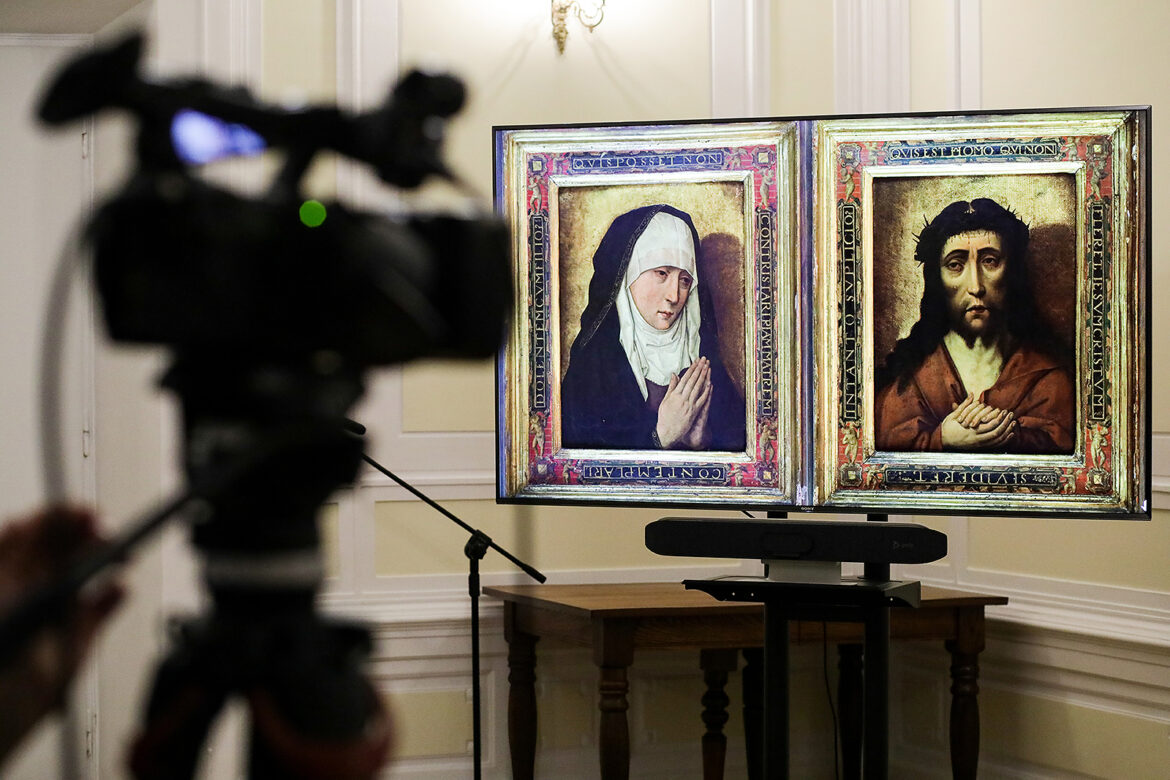On Wednesday, 25 January, the Museo Provincial de Pontevedra in Spain witnessed the official handover to Poland of two paintings from the workshop of Dieric Bouts – ‘Mater Dolorosa’ and ‘Ecce Homo’ – which were Polish wartime losses.
The diptych from the workshop of Dieric Bouts, originating from the Czartoryski Collection, will return to the Gołuchów Castle – a branch of the National Museum in Poznań. “We are very proud that these paintings are returning to their owner, returning to Poland”, said Deputy Prime Minister Professor Piotr Gliński during a briefing at the headquarters of the Ministry of Culture and National Heritage.
Deputy Prime Minister Gliński recalled that Poland lost more than half a million works of art during the Second World War and added that currently there are approx. 130 restitution processes in more than a dozen countries around the world.
The works of art from Dieric Bouts’ workshop were most likely stolen from the National Museum in Warsaw during the Warsaw Uprising. “In 2019, employees of the then Department for the Restitution of Cultural Property identified them in the collection of the Spanish museum Pontevedra”, informed Professor Piotr Gliński.
The medieval diptych from the workshop of Dieric Bouts came to the Polish collection thanks to Izabella Działyńska, née Czartoryska, in 1883 and became part of the art collection at the Gołuchów castle.
After the outbreak of World War II, in the autumn of 1939, part of the Goluchow collection, including the diptych, was transported to Warsaw and hidden in a house at 12 Kredytowa Street, then owned by Maria Ludwika Czartoryska. In October 1941 the artifacts were discovered by the Germans. In December the diptych, together with other paintings from Gołuchów, was taken to the National Museum in Warsaw, where it remained at least until the outbreak of the Warsaw Uprising.
The exact date when the diptych was removed from Poland is not confirmed by sources. However, it is known that the paintings were on the list of the German administration carrying out systematic looting of works of art in occupied Poland.
Adrian Andrzejewski





